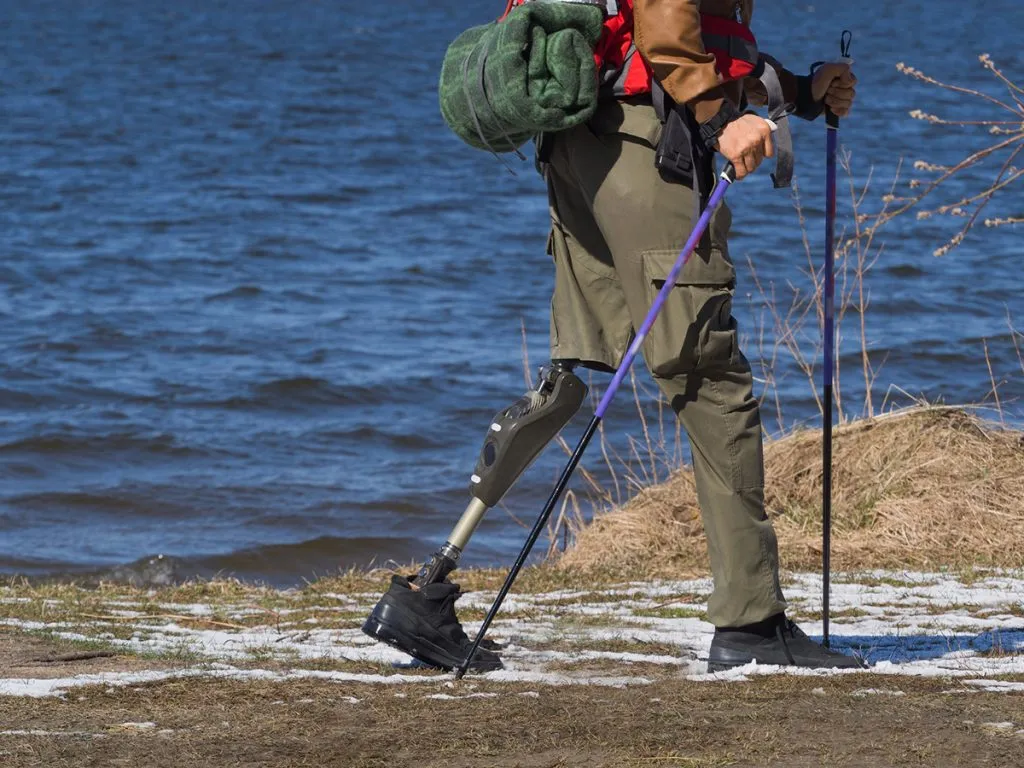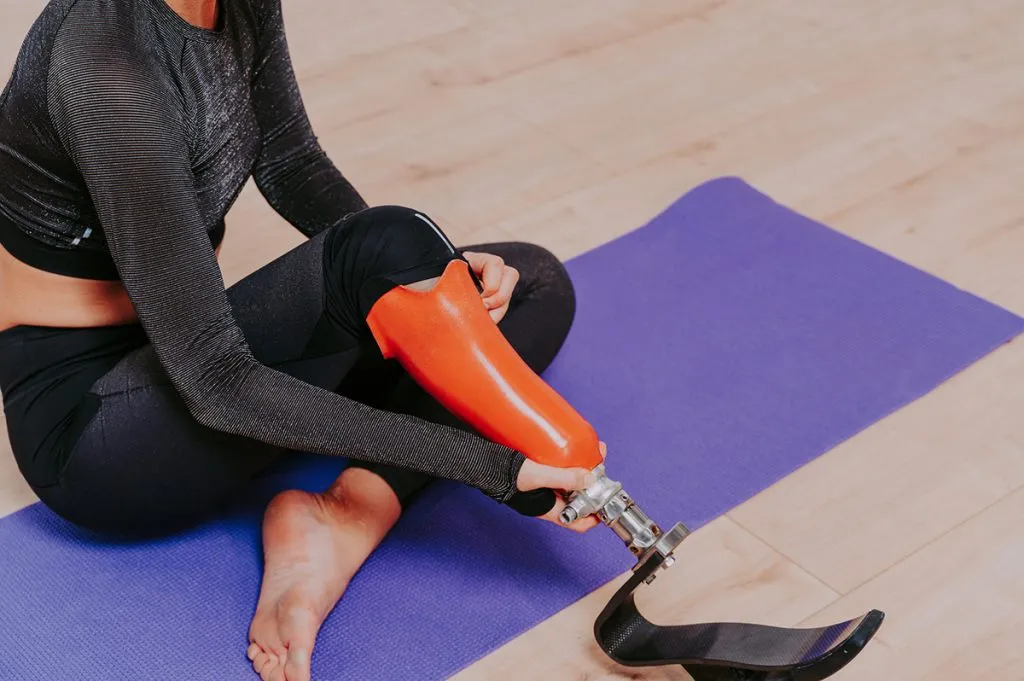Shorts are a popular clothing option for amputees because they’re more comfortable, less limiting than pants, and they make it easier for amputees to continue their daily tasks, such as getting dressed and driving, with ease. Some people who wear a prosthetic leg prefer to wear pants to cover their prosthetic leg. However, many amputees wear shorts because they’re more functional and convenient than wearing pants.
Amputees wear shorts because prosthetic legs can damage pants, and it’s much easier to adjust or remove a prosthetic leg while wearing shorts. Some amputees prefer shorts because it’s difficult for people with prosthetics to take pants on and off, and it’s hard to find pants tailored to amputees.
Wearing shorts can be highly functional for amputees and those wearing prosthetics because it reduces many of the challenges of getting dressed. For many amputees, pants can be ill-fitting and unflattering around their prosthetic leg, and it isn’t easy to slide pants on and off. Keep reading for more information on why amputees often wear shorts.
Prosthetic Legs Can Tear Up Your Pants
The metal edge of a prosthetic socket is sharp and can often rip or tear small holes in amputees’ pants. No one likes to ruin their clothes, so it can be frustrating to put a prosthetic socket through a pair of pants, only to find that it rips or tears.
Prosthetic legs are made from metal, and the edges can be sharp. For people who are amputees that don’t have a foam or metal sleeve to cover their prosthetic, their pants are directly exposed to the metal, which causes snags, rips, or tears when sliding pants on and off. This exposure results in more wear and tear on the pants, causing them to wear out much faster.
Here’s a YouTube video on why pants wear out faster on prosthetic legs:
Many people who’re amputees or wear prosthetic legs have developed their system of avoiding rips in their pants, such as sewing an additional layer of material to them that serves as a barrier between the prosthetic and the pants’ exterior.
Other people wear sleek pants underneath their jeans or use a plastic bag or another covering to put over their socket whenever they have to put on pants.
Going through these extra steps can be an extra hassle when you’re trying to get dressed in the morning, or at any time during the day. Sewing layers to your clothes or covering your prosthetic with plastic is difficult and time-consuming. And it even makes trying on pants at the store difficult or nearly impossible. To avoid the extra difficulty, it’s often simply easier for a person who’s an amputee to wear shorts instead of pants.
Adjusting a Prosthetic Leg Is Easier if You’re Wearing Shorts
Some amputees prefer shorts to pants because it’s easier for them to take their prosthetic on and off or adjust it as needed throughout the day if it comes loose.

Some amputees, especially those with new prosthetics, can’t wear their prosthetic all day, and they have to alternate between hours when their prosthetic is on and off. It can be very challenging to take your prosthetic leg off during the middle of the day if you’re wearing pants, especially if you’re at school or work.
You would have to take your pants off to remove the prosthetic and then put them back on. And most likely, your pants won’t fit as well after you take off the prosthetic leg. Because of this problem, some amputees would have to bring multiple changes of clothes with them throughout the day. Bringing multiple changes of clothes with you can increase time spent on your morning routine and can weigh down your work or school bag.
Wearing shorts can be much easier for removing or adjusting your prosthetic leg mid-day.
Sometimes the prosthetic can shift or come loose during the day, and it’s easier to get to the prosthetic leg if you’re wearing shorts. You don’t have to be worried about running to the restroom to take off your pants. Instead, you can simply reach down and adjust your prosthetic leg then and there.
It Can Be Difficult To Find Pants That Are Made for Amputees
For amputees, many pants will ride up on the side of their amputated leg, creating an unflattering look. Sometimes amputees with prosthetic legs prefer pants with a broader leg around their prosthetic so that it’s easier to put their pants on.
Sometimes pants create an unflattering look for amputees because they don’t fit evenly on both sides. The pants can fit awkwardly around the prosthetic leg, which can be a frustrating experience. Most people want to look their best, and it’s often easier for amputees to wear shorts so that they don’t have to deal with unflattering pants.
Pants Can Be Difficult for Amputees To Put On and Take Off
Pants generally need to be wider for amputees and people with prosthetic legs so that they can fit their entire prosthetic through the pants. Most pants are narrower at the bottom, making it difficult for amputees to fit their prosthetic through the opening. Because many amputees are missing an ankle, getting regular pants on and off can be challenging, so they choose to wear shorts.

Some amputees that wear a prosthetic leg like to wear stretchy clothes and shorts because they’re easier to wear. Most dress pants, trousers, and jeans don’t offer much stretch, so many amputees prefer shorts to pants because they’re roomy, spacious, and non-constricting.
Final Thoughts
For many amputees, wearing shorts is more manageable than wearing pants. Shorts are much roomier and less constricting than pants. They aren’t tapered at the bottom, making them easy to pull on and off. Plus, shorts are stretchier than pants, so it’s easier to adjust or remove a prosthetic leg.
Prosthetic legs can poke holes in your pants. Because of this problem, many amputees have come up with their own solutions to avoid ruining their clothes when they get dressed. These extra measures make getting dressed more difficult and time-consuming, so amputees often opt for shorts to avoid the hassle.
What To Read Next:






